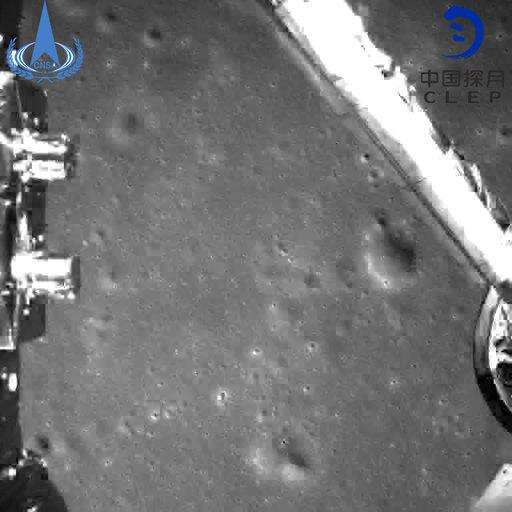This composite image made available by NASA in 2011 shows the far side of Earth's moon. The moon is what scientists call âtidally lockedâ which means the same side always faces us, while another side always faces away, says Harvard astronomer Avi Loeb. "The other side is not dark, itâs just far.â (NASA/Goddard/Arizona State University via AP)
The Associated Press
WASHINGTON (AP) - Despite the name of Pink Floyd's best-selling album, the side of the moon you can't see isn't always dark. But it is far.
So scientists call the area where a Chinese spacecraft just landed the far side, not the dark side.
"The other side sees the sun sometimes. The other side is not dark, it's just far," said Harvard astronomer Avi Loeb. "It's a mistake."
The moon is what scientists call "tidally locked " which means the same side always faces us, while another side always faces away, Loeb said. When Earth views a darkened new moon, the far side is lit. When there's a full moon in our sky, the far side is dark.
Every semester, Purdue University lunar and planetary scientist Jay Melosh demonstrates how the far side gets light using a bright light as the sun and students playing the roles of the moon and the Earth. But students still get it wrong on the midterm, calling it the dark side.
Melosh traces the myth back to a Walt Disney television special in 1955 that talked about it always being dark on the other side of the moon and futuristic astronauts dropping flares.
The term dark side really took off in 1973 with the Pink Floyd's mesmerizing album "The Dark Side of the Moon."
While China is the first to land a spacecraft on the far side, there have been plenty of detailed photographs taken by orbiting spacecraft. The first grainy pictures came from a former Soviet Union craft in 1959. NASA's Apollo 8 astronauts saw it first when they orbited the moon 50 years ago.
___
Follow Seth Borenstein on Twitter: @borenbears .
___
The Associated Press Health & Science Department receives support from the Howard Hughes Medical Institute's Department of Science Education. The AP is solely responsible for all content.
In this photo taken Dec. 27, 2018, the moon, in a waning gibbous phase and briefly visible on an otherwise cloudy day, is seen from Seattle. Despite the name of Pink Floyd's best-selling album, the side of the moon you can't see isn't always dark. But it is far. So scientists call the area where a Chinese spacecraft just landed the far side, not the dark side. (AP Photo/Elaine Thompson)
The Associated Press
In this photo provided Jan. 3, 2019, by China National Space Administration via Xinhua News Agency, the first image of the moon's far side taken by China's Chang'e-4 probe. A Chinese spacecraft on Thursday, Jan. 3, made the first-ever landing on the far side of the moon, state media said. The lunar explorer Chang'e 4 touched down at 10:26 a.m., China Central Television said in a brief announcement at the top of its noon news broadcast.(China National Space Administration/Xinhua News Agency via AP)
The Associated Press

This photo provided on Jan. 3, 2019, by China National Space Administration via Xinhua News Agency shows an image taken by China's Chang'e-4 probe during its landing process. A Chinese spacecraft on Thursday, Jan. 3, made the first-ever landing on the far side of the moon, state media said. The lunar explorer Chang'e 4 touched down at 10:26 a.m., China Central Television said in a brief announcement at the top of its noon news broadcast. (China National Space Administration/Xinhua News Agency via AP)
The Associated Press

In this photo provided on Jan. 3, 2019, by the China National Space Administration via Xinhua News Agency, an image taken by China's Chang'e-4 probe after its landing. A Chinese spacecraft on Thursday, Jan. 3, made the first-ever landing on the far side of the moon, state media said. The lunar explorer Chang'e 4 touched down at 10:26 a.m., China Central Television said in a brief announcement at the top of its noon news broadcast. (China National Space Administration/Xinhua News Agency via AP)
The Associated Press